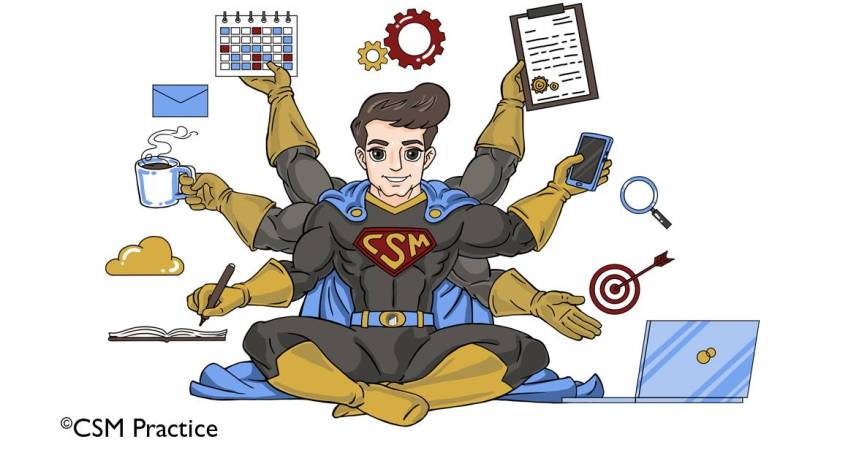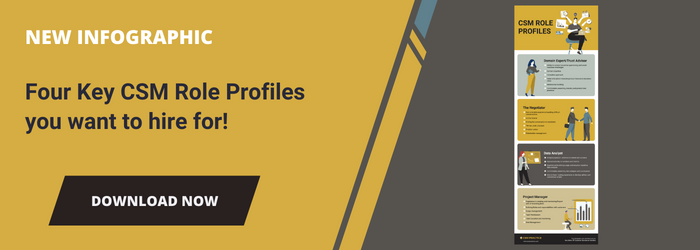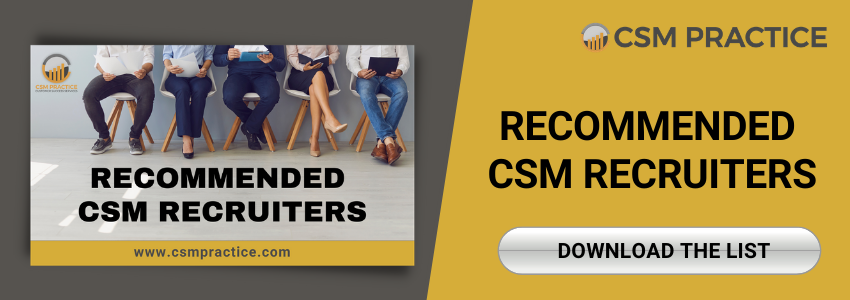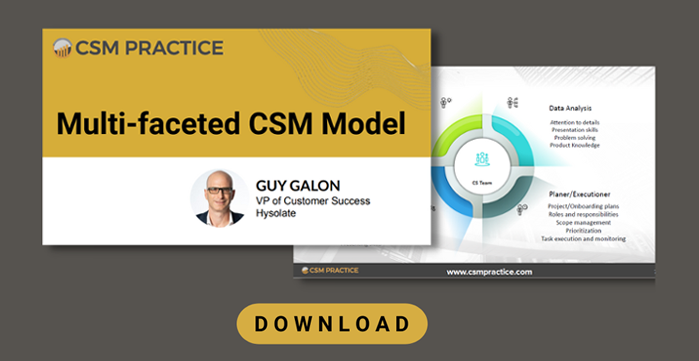The Customer Success landscape has massively evolved recently, and the demand for Customer Success talent consistently grows. As the domain is relatively young, there is a shortage of experienced CS professionals consequently posing challenges to CSM recruitment and later, their training and professional development.
The role of Customer Success Manager (CSM) has been a subject of interest in various webinars and professional forums, leading to meaningful discussions among industry leaders. While there is a common agreement on the “MUST-HAVE” characteristics, the CSM role gradually becomes more demanding and multifaceted. As such, CSMs are expected to integrate various skills such as project management, task prioritization, time management, domain expertise, data analytics, relationship building, stakeholder management, and more.
With these challenges, there is a need for a different approach which is based on hiring talented candidates that may not have CS experience per-se but have sufficient experience in other customer-facing roles.
Recruiting is only one part of the journey. CS professionals and leaders should look closely into developing and promoting talent, not just for their organization’s benefit, but also as part of their contribution to the industry as they strengthen the customer management practice.
This has been one of my core objectives and as such, I created a framework that simplifies the recruiting process and helps me develop various competencies in my team. The underlying assumption of the framework is that anyone who steps into CS MUST HAVE solid customer-facing experience, possess proactive and effective communication skills, show empathy, and have the desire to make customers successful.
With that assumption in mind, I changed my approach to the recruiting process. I did not insist on searching for candidates with explicit CSM experience. Instead, I identified core CSM profiles that require more specific experience and focused my effort on these profiles. My view was (and still is) that I would be able to develop additional expertise within the team and allow CSM with one profile to expand their capabilities to match other desired profiles.
CSM profiles in my team
A CS leader is in a great position to analyze and map the necessary skill sets his/her team should be proficient at. I used this analysis to create 4 CSM profiles applicable to my team. For each profile, I listed the relevant experience and characteristics expected from the candidates.
- The “Project Manager”
o Experience in creating and maintaining Project and Onboarding plans
o Defining Roles and Responsibilities with customers
o Scope management
o Task Prioritization
o Task Execution and monitoring
o Risk management
- The “Data Analyst”
o Analytical person—Attention to details and numbers
o Natural curiosity about numbers and metrics
o Experienced in driving usage and adoption based on data analysis
o Comfortable presenting data analysis and conclusions.
o Nice to have – coding experience to develop ad-hoc and customized scripts.
- The “Domain expert/Trusted Advisor”
o Ability to conduct proactive questioning and unveil customer challenges
o Domain Expertise
o Consultative approach
o Value articulation – translate product features to business value
o Relationship “builder”
o Comfortable presenting Industry and product best practices.
- The “Negotiator”
o Demonstrable experience managing difficult conversations
o Active listener
o Driving the conversation to resolution
o Thrives under pressure
o Problem solver
o Stakeholder management
The benefits of creating CSM profiles?
- CS leaders can better define the roles and skills needed in their team (a good exercise to conduct as part of the team structure planning).
- Expanding the search and recruitment of CSMs matching one or more profiles, thus creating more hiring options
- CS Leaders identify the domains of knowledge and expertise that their team should improve and plan to close the professional gaps.
- In the mid-to-longer term, the framework supports skills diversity across the team and reduces the “single point of failure” scenario.
- Align recruitment, onboarding, training, and mentoring efforts in the team.
The Playbook:
- Look for the underline skills required in your team and define the relevant CSM profiles.
- The profiles I created are not “set in stone” and you can define your profiles. The ones I listed above worked well for me, however, there could be other profiles depending on your customer touch model, product complexity, type of industry, and other factors.
- Map your team members’ capabilities to the CSM profiles and understand their core strengths.
- Put a plan in place to improve the skill sets of your team members. More examples and suggestions are listed in the last section of the article.
- Use your team’s strengths and experience to perform a joint collaborative learning experience. The leader is not necessarily the sole mentor in the team. Other CSMs can leverage their own expertise and experience to support and mentor their team members. At the same time, they will develop their own mentoring skills, to further develop their career.
Training and skill development examples:
The theory is good, but now it is time to put it into action. I am sharing a few practical ideas and examples to develop additional competencies across the team. The goal is for the CSMs to become multi-faceted and eventually match more than one CSM profile.
- The “Project Manager”
o Explore the onboarding process and suggest efficiencies (for example, “Can we optimize any existing processes to shorten time-to-value?”)
o Ask the CSM to shadow another CSM experienced in project management and let him/her review risks and suggest mitigations.
o Ask the CSM to be the focal point of the product team and manage feature request prioritization
- The “Data Analytics”
o Ask the CSM to review existing internal CS reports/dashboards and recommend improvements.
o Propose new metrics and present them internally to the team.
o Work with Product/Engineering to automate alerts and improve internal monitoring.
- The “Domain expert/Trusted Advisor”
o Ask the CSM to review existing Playbooks and propose improvements.
o Ask the CSM to research certain topics and obstacles customers face in their market, then present them as part of the exercise.
o Review and Improve QBR /EBR Templates based on customer feedback and new product capabilities.
- The “Negotiator” – performs different simulations within the team:
o Provide an explanation for a product defect reported by the customer.
o Update customer following service interruption, including lessons learned (if applicable).
o Update customers about a delay in delivering important product features.
Mapping the skills in your team is a good exercise to perform. Then you can create the profiles, consequently, expand your candidate search, and recruit talented CSMs. You will know what their strengths are and plan their professional development. Doing it right, you will benefit from having a more skill-diversified team, appreciative of your efforts to promote them, and motivated to take on the challenges they have been training for.





